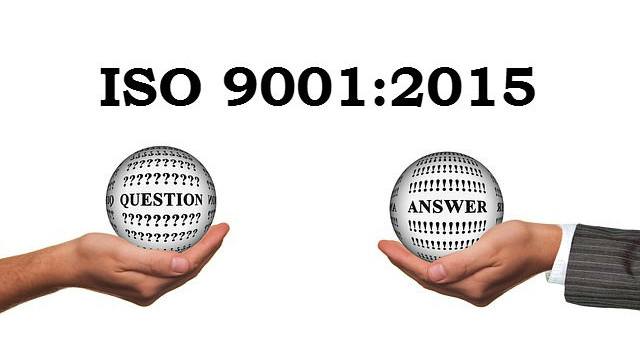Being in the middle of an audit and becoming conscious of the fact that you have run out of questions is a very unpleasant situation. Certainly we can overcome this with the help of proper research and planning and this article will look at some important ISO 9001 internal audit questions and answers. Nevertheless, the reality is that ISO 9001:2015 comprises loads of new requirements that were not part of the majority of the audits in the audit practices with the previous standard. In order to avoid any weird question we must know the most important ISO 9001 internal audit questions and answers.
ISO 9001 Internal Audit Questions and Answers
- The first important question to ask is“What can you explain about the context of your organization?”. Usually these questions are directed at senior management or the person taking care of the quality management system (QMS). An auditor is looking for an unambiguous assessment of work forces inside and outside the organization. For its answer, the context must take account of internal and external concerns that are related to our organization’s objective, policy, and QMS purposes. A lot of organizations will most likely utilize a SWOT (strengths, weaknesses, opportunities, and threats) analysis to facilitate them in defining context; however it’s not an obligation. The key findings learned by the organization from this will be an important contribution for risk analysis.
- The second important question to consider for ISO 9001 internal audit questions and answers is “Who are the interested parties in the organization and what are their requirements?” This question seems to be a wide-ranging question, however it is an important requirement to be acquainted with this information and give it to the auditor. Interested parties are concerned with the internal and external individuals that are related to your Quality Management System. The examples of these people include customers, employees, suppliers and supervisory bodies. Even if we know who our interested parties are, we will need to recognize their requirements as well. For this purpose, careful planning holds significant value for identifying with the individual demands of all parties and proof will need to be given in the audit.
- The third important question is that “What risks and opportunities have been recognized, and what are you doing about them? Indeed, risks and opportunities might truly be termed as the foundation of ISO 9001:2015. At least 13 other sub-clauses focus directly on risks and opportunities, so it makes them the “associated” piece of the standard for the most part. The QMS cannot be effective if an organization fails at identifying its risks and opportunities. Auditors must endeavor to make sure that risk and opportunities consist of issues that concentrate on preferred outcomes, avert problems, and compel improvement. Appropriate action plans must be planned once risks and opportunities are recognized, so that they can be addressed properly. The prioritization of risks and opportunities is not stated particularly in ISO 9001:2015. Despite the fact, it would be a smart approach for organizations to do so as risks and opportunities do not have any limit, but the organizations resources do.
- The fourth important question is “What plans have been put in place to reach quality objectives?” Quantifiable quality objectives have long been a component of ISO 9001. The new aspect in this context is to plan actions to do so in practical terms. Moreover, the plans are aimed to be precise and actionable, concentrating on actions, assets, tasks, time limits, and assessment of results.
- The fifth important question is“ How has the QMS been incorporated into the business practices of the organization? This question is inquired directly to the senior management and it reveals a lot of key aspects. The basic fact is that ISO 9001 is transforming from just being a QMS standard and developing into a proper system of strategic management. So we can say that its focus is not just to make sure that company products or services fulfill the necessary requirements. This standard is about the management of all business aspects. Therefore, the senior management must be competent enough in order to clearly explain how the QMS is utilized for running the organizations operation.
- The sixth important question is that “How the organization is going to manage change?” This question holds imperative value as we cannot deny the importance of change as an organization is always going to face a change at some point. Hence, a proactive approach with proper preparation counts a lot in order to deal with those changes. The organization will need to have predictable changes and offer proof on how these changes are going to be managed. The examples of these changes comprise of: changes in employees job description, customer requirements, products, and suppliers.
- Last but not the least from our ISO 9001 internal audit questions and answers is “How do the company gain and use its knowledge?” ISO 9001:2015 endeavors that organizations must learn from their negative as well as positive experiences. This can be done through different sources such as customer feedback, data analysis, project debriefs, staff meetings, and job close-outs. The way an organization gains its knowledge varies, however the process must be clear and practical. The knowledge should also be maintained and accessible. One approach to check the authenticity of this practice would be to ask about latest successes or failures. The way in which organizations learn from these accomplishments or let downs in a manner that will help in making it more effective.






